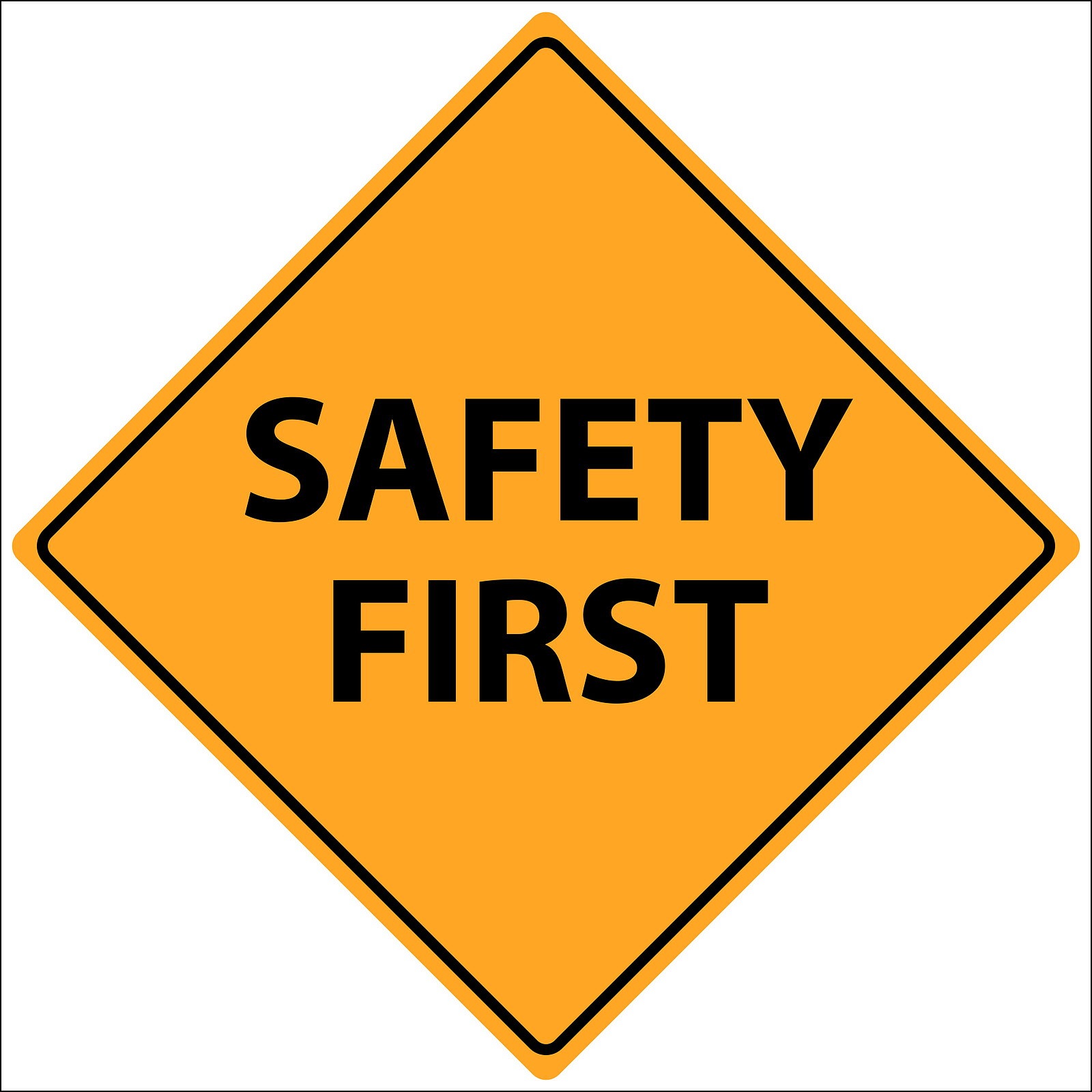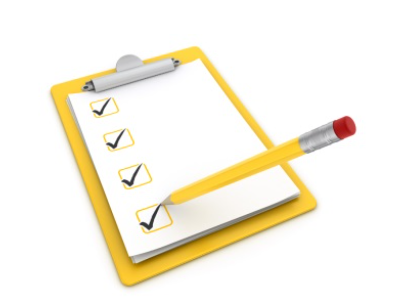Title Page
-
Site conducted
-
Client / Site
-
Version :
-
Conducted on
-
Confirmed by
SELF ASSESSMENT
POLICY
-
1. Does the school have a documented Work Health Safety (WHS) Policy?
-
2. Has the WHS Policy been reviewed in the last 24 months ?
-
4. Does the school have a WHS Policy Statement signed by the Principal and communicated widely to staff?
-
5. Does the school have a comprehensive WHS Management System?
RESPONSIBILITY
-
6. Does the school have a Senior Manager or Departmental Head who has WHS management as part of their portfolio?
-
Name:
-
7. Does the school have a dedicated person who has been appointed as the WHS Advisor or WHS Officer to manage safety issues on a daily basis?
-
Name:
-
8. Does the school have an Executive Committee or a sub-Committee of the School Council that oversees risk and safety compliance?
-
9. Are WHS Responsibility Statements or Position Descriptions available for key WHS personnel such as WHS Advisor, WHS Senior Manager, WHS Committee Members etc?
-
10. Do ALL staff position descriptions include a clause covering WHS responsibilities and ramifications of breaches?
-
11. Are the consequences of WHS breaches discussed with staff involved in any serious safety breach?
PURCHASING
-
12. Are procedures in place to ensure that potentially dangerous equipment or furniture purchased (or donated) are safe to use?
-
13. Are Risk Assessments or Safe Work Method Statements prepared for any new high risk equipment or supplies BEFORE they are purchased and delivered?
-
14. Are staff aware that no equipment, tools, furniture, step ladders etc can be brought in from home to use at the school without first being cleared that the items are safe to use?
STAFF WHS COMMITTEE
-
15. Does the school have a Staff WHS Committee (or similar) in place?
-
16. Does the membership of the Staff WHS Committee represent all major risk areas of the school eg Sports, Science?
-
17. Is an AGENDA set for each meeting and MINUTES maintained?
-
18. Does the Staff WHS Committee meet at least twice per year?
-
19. Are the minutes of each meeting distributed to Senior Management?
-
20. Are the minutes of each meeting available to all staff?
-
21. Are the details and identity of each WHS Committee member communicated to staff and listed on notice boards in key locations?
-
22. Are nominations for Staff WHS Committee positions called each year?
-
23. Do new WHS Committee members receive training on their responsibilities and a briefing on the WHS Act prior to commencing on the Committee?
RISK MANAGEMENT
-
24. Are Risk Assessment forms readily available to complete prior to any external activities or high risk/abnormal internal activities?
-
25. Are Risk Assessments graded or risk scored (pre and post controls) then approved by a Senior Manager PRIOR to the activity or event.
-
26. Are Risk Assessments completed for high risk curriculum activities such as Science Pracs and Design Technology Projects.
-
27. Are Safe Work Method Statements (SWMS) prepared for regular high risk activities (e.g. Lifting & Carrying, Digging Holes etc) and signed off by relevant staff that they have read and understand the contents?
-
28. Is there a system in place and available for all staff to report hazards?
-
29. Is a system/register available that shows completed and outstanding Hazard corrections?
-
30. Is the Hazard Correction Update report discussed at Staff WHS committee meetings?
-
31. Does the Executive and or Council review, manage and monitor the high level STRATEGIC RISKS facing the school (e.g financial risks, reputation risk, etc.) at least once per year?
WHS CONFLICT RESOLUTION
-
32. Does the school have a process or procedure for WHS conflict resolution?
-
33. Is this WHS Conflict Resolution process communicated to staff ?
SAFETY TRAINING AND SUPERVISION
-
34. Do new staff receive WHS training including general evacuation and lockdown instructions within 2 days of commencing at the school?
-
35. Do all volunteers receive basic WHS and Emergency instructions before commencing at the school?
-
37. Is a WHS Training Needs Analysis undertaken at the start of each year to determine the staff that may require specialist WHS training?
-
38. Is specialist training carried out for staff who regularly perform high risk activities or use high risk equipment (such as Facilities Staff).
-
List training:
-
39. Is a Register maintained and managed that shows FIRST AID and CPR training conducted by staff and certificate expiry dates?
-
40. Is a Register maintained and managed that shows FIRE RESPONSE & EMERGENCY training conducted by staff?
ELECTRICAL SAFETY
-
41. Does the school have a RESIDUAL CURRENT DEVICE (RCD) installed across the school?
-
42. Is a record maintained of all tests (including Push to Test) of the RCD?
-
43. Is Testing and Tagging of appropriate electrical items carried out at least annually?
-
44. Does the school have an internal resource who can conduct Test and Tagging?
-
45. Are staff regularly reminded not to overload power outlets?
-
46. Are all power outlets protected in areas where pre-school children regularly attend?
FACILITIES WORKSHOP - DANGEROUS EQUIPMENT AND PLANT
-
47. Are STANDARD OPERATING PROCEDURES (SOP's) available and posted on or near all dangerous equipment and plant?
-
48. Are SAFE WORK METHOD STATEMENTS (SWMS) conducted and/or reviewed on an annual basis for use of dangerous equipment and plant?
-
49. Do all dangerous machines or plant have sufficient safety guards/protection and are stored out of reach of students?
-
50. Are all dangerous equipment and plant regularly serviced and maintenance records are kept?
-
51. Are all dangerous machines and plant only used for the activities listed in the manufacturer's instructions/handbook?
-
52. Are EMERGENCY STOPS in place for appropriate high risk appliances/machines?
-
53. Is a First Aid kit available and clearly designated from all areas of the Workshop?
-
54. Are there sufficient safety posters on display to remind staff of risks?
-
55. Is the Facilities workshop located in area that is unaccessible by students?
-
56. Are regular safety inspections conducted on the Facilities Workshop and any safety issues resolved quickly?
HAZARDOUS CHEMICALS & FUELS
-
57. Are hazardous chemicals appropriately stored and out of reach of students?
-
58. Are Safety Data Sheets available for all hazardous chemicals stored at the school?
-
59. Are SPILL KITS and appropriate PPE (safety glasses, gloves etc.) available in areas where chemicals and fuels are present?
-
60. Have relevant staff received training on how to deal with a hazardous chemical spill within the past three years?
-
61. Are EYE WASH facilities and or clean running water facilities available in areas where dangerous chemicals are present?
-
62. Are DELUGE SHOWERS or similar, available in areas where hazardous chemicals are present?
-
63. Are flammable and combustible substances safely stored and separated in accordance with the appropriate SEPARATION TOOL?
NOISE RISK
-
64. Have AUDIOMETRIC TESTS been carried out in the last five years in areas where staff and students are at risk of exposure to high noise levels such as Music Department and Facilities Workshop?
-
65. Do staff and students have access to hearing protection in areas where they are at risk of exposure from high noise levels?
-
66. Are staff working in high noise level areas regularly reminded on the need for hearing protection?
LIFTING AND CARRYING
-
67. Are Risk Assessments or Safe Work Method Statements prepared for hazardous manual tasks involving lifting and carrying on an annual basis?
-
68. Do workers involved in regular lifting and carrying activities receive training and reminders on correct lifting and carrying techniques?
-
69. Are mechanical devices and/or trolleys available to help lift and carry heavy objects?
-
70. Are lifts available to help deliver heavy items to upper floors?
SCIENCE DEPARTMENT
-
71. Are flume cupboards available to reduce hazardous atmosphere risks?
-
72. Are eye wash baths available in the Science Classrooms and regularly tested?
-
73. Are deluge showers available in or near Science Classrooms?
-
74. Are Risk Assessments performed prior to every potentially dangerous Science prac?
-
75. Are hazardous chemicals stored safely in the Science Department and in low quantities to reduce risk?
-
76. Are spill kits available in the Science Department to deal with potential chemical spills?
-
77. Are Data Sheets for hazardous chemicals readily accessible in an emergency situation?
-
78. Are safety goggles and protective coats available for students to use?
-
79. Are safe disposal facilities available for sharps and broken glass?
-
80. Are appropriate first Aid facilities available in the Science area to treat potential injuries such as chemical burns?
-
81. Are Emergency Gas Stop buttons installed in key areas?
HOSPITALITY AREAS
-
82. Are Fire Blankets and other Fire equipment available in Hospitality Kitchen areas?
-
83. Are sharp knives and other cutting devices stored out of reach from students?
-
84. Are all appropriate food safety hygiene standards followed?
-
85. Is a First Aid kit available and clearly designated from all areas of the room?
DESIGN TECH WORKSHOPS
-
86. Are Safe Operating Procedures posted near all dangerous equipment?
-
87. Is a First Aid kit available and clearly designated from all areas of the room?
-
88. Do students have adequate workspace to operate high risk equipment safely?
-
89. Are there sufficient safety posters on display to remind students and staff of risks?
-
90. Are Emergency Stops in place to immediately shut off power to dangerous equipment/appliances ?
FIRST AID
-
91. Are there Automatic Defibrillators available on campus and located in key areas?
-
92. Is a Risk Assessment performed at least annually to ensure First Aid facilities and resources are adequate for the number of Students and Staff?
-
93. Does the school have a dedicated First Aid station operated by suitably trained personnel during the hours when students are on campus?
-
94. Does the school have an adequate number of staff trained in CPR and a First Aid?
-
95. Does the school have an effective Concussion policy and procedures?
-
96. Does the school have an effective Infectious Disease policy and procedures?
-
97. Does the school have adequate Anaphylaxis policies and procedures in place including the management and storage of EPI-Pens?
WORKING AT HEIGHTS and LADDER SAFETY
-
98. Does the school have a Policy or Safe Work Method Statement for Working at Heights?
-
99. Have relevant staff received Working at Height and/or Ladder Safety Training within last three years?
-
100. Does the school have a Ladder Register showing inspection dates?
-
101. Are all ladders and safety steps certified to carry a weight load equal to or more than 120 kgs
FALLING OBJECTS
-
102. Are there regular inspections to discover any unsecure items/objects that could potentially fall - resulting in a hazard or injury?
-
103. Are regular inspections conducted by an arborist to identify any potential trees or branches that may fall?
SECURITY AND WORKPLACE VIOLENCE
-
104. Does the school have procedures to identify and approach potential intruders?
-
105. Does the school have adequate security cameras around the campus?
-
106. Does the school engage a security company to ensure the safety of staff and students after hours?
CONFINED SPACES
-
107. Are ALL confined spaces at the school identified with clear warning signs?
-
108. Are all relevant staff trained in working in confined spaces and aware of correct procedures.
FATIGUE MANAGEMENT
-
109. Does the school have a Fatigue Management Policy?
-
110. Is the Fatigue Management policy readily available to all staff?
-
111. Are Management and supervising staff trained in how to recognise the early signs of fatigue in staff?
CONTRACTOR MANAGEMENT
-
112. Does the school have a Contractor Register that captures insurance, licence, workcover and blue card (if required) details?
-
113. Does the school have an electronic system to facilitate contractor sign in and sign out?
-
114. Do all contractors receive a WHS, Emergency and Student Protection briefing when they first arrive at the school and sign off that they understand the instructions given?
ACCIDENT REPORTING, INVESTIGATION AND ANALYSIS
-
115. Are all NOTIFIABLE ACCIDENTS advised to WHS Queensland?
-
116. Are all non-minor accidents investigated to minimise the risk of repeating?
-
117. Are all non-minor accidents reported and discussed at WHS Committee Meetings?
-
118. Are Accident and/or Incident Report forms readily available to all staff?
-
119. Are all non-minor Accidents recorded and reported to the Principal/Deputy Principal or Executive?
-
120. Are non-minor accidents analysed on an annual basis to highlight any trends or risk areas that need to be addressed?
EMERGENCY PLANNING
-
121. Does the school have an Emergency Response Plan that has been reviewed and updated in the past 12 months?
-
122. Does the school have regular Fire Safety Audits that shows compliance with the QLD Fire Code regulations regarding Fire Exits, Fire Equipment, Evacuation Maps, Designated Assembly Areas ?
-
123. Is Fire Equipment (including exit lights, fire extinguishers, Fire blankets, Fire Doors and hydrants) checked every six months by a suitably qualified external contractor?
-
124. Does the school conduct regular EVACUATION practice drills?
-
125. Does the school conduct regular LOCKDOWN practice drills?
-
126. Does the school have procedures in place to manage BOMB THREATS?
-
127. Does the school have an Emergency Planning Committee that meets at least once per year?
-
128. Are all EVACUATION MAPS current and meet Fire Regulation standards?
SPORTS & RECREATIONAL FACILITIES
-
129. Are regular safety checks conducted at sports grounds and any reported hazards addressed within a reasonable time period.
-
130. Are indoor gyms and weight clubs inspected regularly for potential hazards?
-
131. Are swimming pools adequately maintained and meet all required safety and hygiene standards?
-
132. Are Rowing Sheds regularly inspected for potential hazards?
SPORTS ACTIVITIES
-
133. Are lightning and hot weather procedures in place and all sports teachers/coaches clearly understand when sports activities must be suspended/cancelled?
-
134. Are safety checks conducted before every match/game to ensure that playing fields, courts, pitches, tracks or indoor surfaces do not pose a risk of injury to players?
-
135. Are procedures in place to ensure that players are wearing the necessary safety protection required for each particular sport in order to minimise the risk of sports injuries to players?
-
136.1 Are sufficient First Aid supplies available to treat injured players such as bandages, ice etc.
-
136.2 Are players regularly reminded to bring water supplies to sports activities and to keep adequately hydrated?
TRAFFIC MANAGEMENT
-
137. Are Crossing supervisors adequately trained by the Department of Transport and provided with appropriate crossing equipment.
-
138. Does the school have sufficient emergency vehicle and disabled parking bays?
-
139. Are adequate flashing lights and warning signs in place to advise drivers to slow down when students are present?
-
140. Are vehicles illegally parked in emergency vehicle or disabled parking bays asked to move?
-
141. Does the school have sufficient pick up and drop off areas for students?
RETURN TO WORK
-
142. Does the school have Return to Work policy and procedures?
-
143. Does the school encourage suitable return to work practices for injured staff?
-
144. Are any current Return to Work Plans endorsed at Staff WHS Committee meetings?
STAFF WELLNESS
-
145. Does the school have a mechanism in place to monitor staff wellness and recognise any early signs of stress?
-
146. Are adequate "wellness" opportunities available to staff?
STUDENT WELLNESS
-
147. Does the school have a Pastoral Care program or similar to measure and manage trends in student mental wellbeing?
-
148. Does the school have an approved Child & Youth Risk Management Strategy that includes strategies to protect students from the risk of harm?
ERGONOMICS
-
149. Are instructions available to show staff how to correctly set up workstations and seating arrangements?
-
150. Are Ergonomic Reviews for workstations available for staff on request?
-
151. Are inspections carried out to ensure office equipment, chairs etc. meet safety standards?
WHS PRACTICES & INSPECTIONS
-
152. Is a WHS Action Plan prepared at the start of each school year and progress against actions regularly monitored throughout the year by the Staff WHS Committee?
-
153. Are safety inspections and reports conducted on the EARLY LEARNING & OSHC areas at least twice per year?
-
154. Are safety inspections and reports conducted on PRIMARY SCHOOL classrooms at least twice per year?
-
155. Are safety inspections and reports conducted on the Primary School and Early Learning PLAYGROUND EQUIPMENT at least twice per year?
GENERAL
-
156. Are there adequate drinking facilities for students around the campus?
-
157. Are ALL areas of the school able to be easily accessed by a student, staff member, parent or visitor in a wheelchair ?
-
158. Does the school have a SunSmart Policy and sun protection practices are in place such as the provision of sun screen to students in summer months?
-
159. Are there adequate shaded and protected areas for students, staff and visitors?
-
160. Do all stairways have handrails that meet Australian building standards?
-
161. Has the school received an ASBESTOS REPORT from suitably qualified consultants in the past five years and all areas containing asbestos are clearly marked?
-
162. Is LIGHTING sufficient at night to allow staff, students and visitors to be able to navigate the school safely?
-
163. Are warning signs used by CONTRACTORS when any potentially dangerous work is taking place?
-
164. Does the school have a remote flying aircraft (DRONE) Policy that states the necessary safety guidelines?
-
165. Does the school have adequate waste management facilities in place ?
-
166. Does the school meet all Government public health directives and regulations relating to any epidemic/pandemic (such as COVID-19)?
-
167. Does the school have a Healthy Eating mandate in place for students?
Prepared by:
-
Name:
-
Date:
Confirmed by:
-
Name:
-
Date













